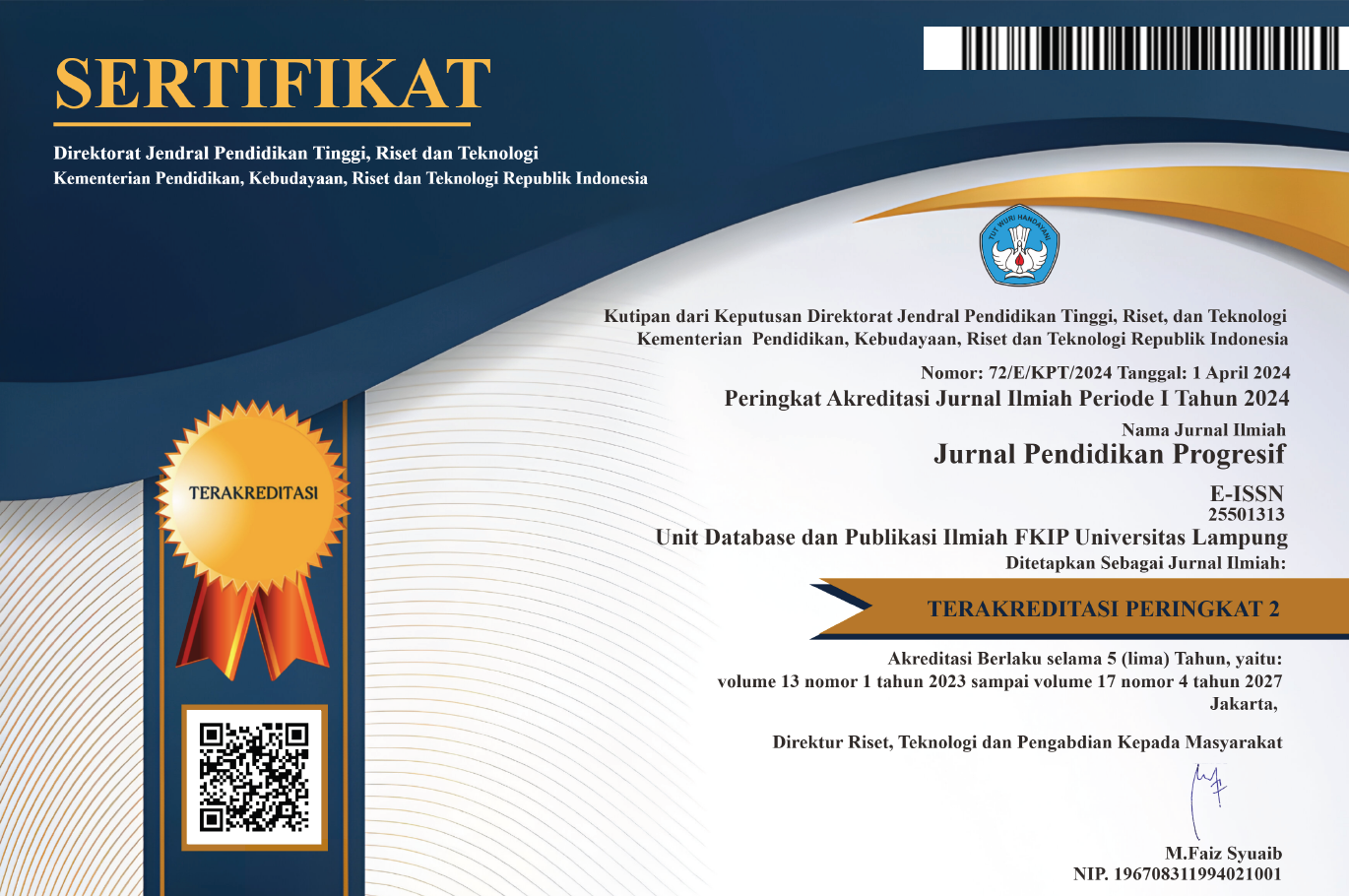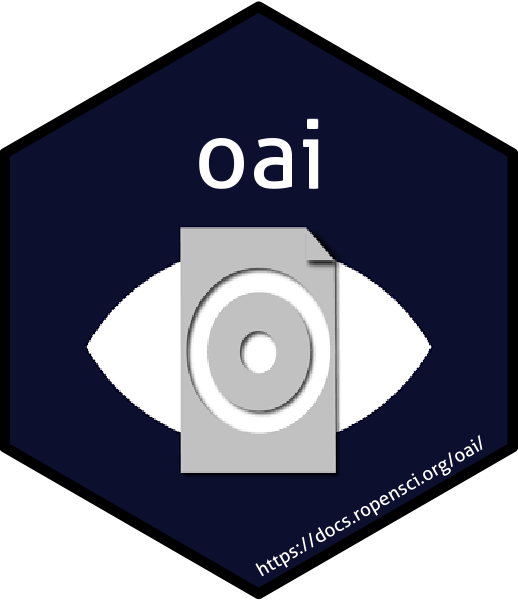The Effects of I-bLA on Resolving the Issues of the EFL Students’ Writing Skills and Content Originality
 Country:
Country:
(1) Politeknik Negeri Padang, Indonesia
(2) Politeknik Negeri Padang, Indonesia
(3) Politeknik Negeri Padang, Indonesia
(4) Politeknik Negeri Padang, Indonesia
The Effects of I-bLA on Resolving the Issues of the EFL Students’ Writing Skills and Content Originality. Objective: This research aims at testing the effects of Inquiry-based Learning Approach (I-bLA) on Resolving the Issues of the EFL Students’ Writing Skills and Content Originality. Method: The one Group Pre-test and Post-test experimental research design was used to test the effects of I-bLA. Findings: The result of paired sample test explicates that the sig. 2-tailed value is 0.000 designating a significant difference between pre-test and post-test. Furthermore, the I-bLA significantly decreases the similarity index by 80% meaning that the content originality of the students’ essays does not match against the original sources. Conclusion: the use of I-bLA can significantly resolve the issues of the EFL students’ Writing Skills and Content Originality.
Keywords: I-bLA, writing skills, content originality
Ackley, Betty. (2010). Nursing diagnosis handbook: an evidence-based guide to planning care. Maryland Heights, Mo: Mosby.
Ai, R., Bhatt, M., Chevrier, S., Ciccarelli, R., Grady, R., Kumari, V., & Wong, H. (2008). Choose your own inquiry. Lanham, MD: University Press of America.
Alfieri, L., Brooks, P. J., Aldrich, N. J., & Tenenbaum, H. R. (2011). Does discovery-based instruction enhance learning? Journal of Educational Psychology, 103(1), 1-18.
Alsulami, S. (2016). Toward a Constructivist Approach in Saudi Education. English Language Teaching, 9(12), 104-108.
American Psychological Association (APA). (2020). Publication manual of the American Psychological Association (7th ed.).
Anefnaf, Z. (2017). English Learning: Linguistic flaws, Sains Faculty of Arts and Humanities, USMBA. Retrieved from https://www.academia.edu/33999467/English_Learning_in_Morocco_Linguistic_Flaws
Anderson, L. W., & Krathwohl, D. R. (Eds.). (2001). A taxonomy for learning, teaching, and assessing: A revision of Bloom’s taxonomy of educational objectives. New York: Longman.
Apuke, O. (2017). Quantitative Research Methods: A synopsis review. Arabian Journal of Business and Management Review, 6(10), 40–47.
Bachtold, M. (2013). What do students “construct” according to constructivism in science education? Research in Science Education, 43(6), 2477–2496.
Banchi, H., & Bell, R. (2008). The Many Levels of Inquiry. Science and Children, 46(2), 26–29.
Barber, S. J., Rajaram, S., & Marsh, E. J. (2008). Fact learning: how information accuracy, delay, and repeated testing change retention and retrieval experience. Memory, 16, 934–946.
Beck, R. H. (2009). The Three R’s Plus: What Today’s Schools are Trying to Do and Why. Minneapolis: University of Minnesota Press.
Bell, R., & Banchi, H. (2008). The Many Levels of Inquiry. Science & Children, 46(2), 26-29.
Bell, T., Urhahne, D., Schanze, S., & Ploetzner, R. (2010). Collaborative inquiry learning: Model, tools, and challenges. International Journal of Science Education, 3(1), 349–377.
Bonwell, C., & Eison, J. (1991). Active learning: Creating Excitement in the Classroom. Washington, D.C.: Jossey-Bass.
Bowdoin. (2020). The Common Types of Plagiarism. Retrieved from https://www.bowdoin.edu/dean-of-students/judicial-board/academic-honesty-and-plagiarism/common-types-of-plagiarism.html
Bretag, T. (2016). Handbook of Academic Integrity. Singapore: Springer.
Bretag, T., Mahmud, S., Wallace, M., Walker, R., James, C., Green, M., & Partridge, L. (2011). Core elements of exemplary academic integrity policy in Australian higher education. International Journal for Educational Integrity, 7(2), 3-12.
Bretag, T., & Mahmud, S. (2009). Self-plagiarism or Appropriate Textual Re-use. Journal of Academic Ethics, 7(3), 193–205.
Bryman, A. (2012). Social research methods (4th ed.). Oxford: Oxford University Press.
Creswell, J. W., & Cresswell, D. J. (2018). Research design: Qualitative, quantitative, and mixed methods approaches (5th ed.). Thousand Oaks: SAGE.
DeRue, S. (2012). A Quasi Experimental Study of After-Event Reviews. Journal of Applied Psychology, 97(5), 997–1015.
Dorier, J. L., & Garcia, J. F. (2013). Challenges and opportunities for the implementation of inquiry-based learning in day-to-day teaching. ZDM Mathematics Education, 45, 837–849.
Dostál, J. (2015). Inquiry-based Instruction: Concept, Essence, Importance and Contribution. Olomouc: Palacký University.
Du Plessis, E. (2020). Student teachers’ perceptions, experiences, and challenges regarding learner-centred teaching. South African Journal of Education, 40(1), 1–10.
Flora, R., Raja, P., & Mahpul. (2020). Discovery Learning Strategy: Integrating Think-Pair Share and Teacher’s Corrective Feedback to Enhance Students’ Writing Language Accuracy. International Journal of Education and Practice, 8(4), 733–745.
Fribourg, O., & Rosenvinge, J. H. (2013). A comparison of open-ended and closed questions in the prediction of mental health. Quality and Quantity, 47(3), 1397–1411.
Goertzen, M. J. (2017). Introduction to Quantitative Research and Data. Library Technology Reports, 53(4), 12–18.
Gurol, A. (2010). Determining the reflective thinking skills of pre-service teachers in learning and teaching process. Energy Education Science and Technology: Social and Educational Studies, 3(3), 387–402.
Hua, L. (2007). Understanding and Assessing EFL Teachers Reflective Thinking. CELEA Journal (Bimonthly).
Hung, H. (2015). Flipping the classroom for English language learners to foster active learning. Computer Assisted Language Learning, 28(1), 81–96.
Klemenèiè, M. (2017). From Student Engagement to Student Agency: Conceptual Considerations of European Policies on Student-Centered Learning in Higher Education. Higher Education Policy, 30(1), 69–85.
Krista, K. (2018). Evidence for Student Centered Learning. ERIC number ED581111. Retrieved from https://eric.ed.gov/?q=Evidence+for+Student+Centered+Learning&id=ED581111
Lance, P., & Hattori, A. (2016). Sampling and Evaluation. MEASURE Evaluation, 6(8), 62–64.
Lane, J., & Lange, E. (1999). Writing Clearly: An Editing Guide (2nd ed.). New York: Heinle & Heinle Publishers.
Larson-Hall, J. (2008). Weighing the benefits of studying a foreign language at a younger starting age in a minimal input situation. Second Language Research, 24(1), 35–63.
Fribourg, O. & Rosenvinge, J. H. (2013). A comparison of open-ended and closed questions in the prediction of mental health. Quality and Quantity, 47(3), 1397–1411.
Goertzen, Melissa J. (2017). Introduction to Quantitative Research and Data. Library Technology Reports, 53(4), 12–18.
Gurol, A. (2010). Determining the reflective thinking skills of pre-service teachers in learning and teaching process. Energy Education Science and Technology. Social and Educational Studies, 3(3), 387–402.
Hua, L. (2007). Understanding and Assessing EFL Teachers Reflective Thinking. CELEA Journal (Bimonthly).
Hung, H. (2015). Flipping the classroom for English language learners to foster active learning. Computer Assisted Language Learning, 28(1), 81–96.
Klemenèiè, M. (2017). From Student Engagement to Student Agency: Conceptual Considerations of European Policies on Student-Centered Learning in Higher Education. Higher Education Policy, 30(1), 69–85.
Krista, K. (2018). Evidence for Student Centered Learning. ERIC number. ED581111. Online, https://eric.ed.gov/?q=Evidence+for+StudentCentered+Learning&id=ED581111
Lance, P. & Hattori, A. (2016). Sampling and Evaluation. Web: MEASURE Evaluation, 6(8), 62–64.
Lane, J & Lange, E. (1999). Writing Clearly: An Editing Guide (2nd ed.). NY: Heinle & Heinle Publishers.
Larson-Hall, J. (2008). Weighing the benefits of studying a foreign language at a younger starting age in a minimal input situation. Second Language Research, 24(1), 35–63.
Merriam-Webster Dictionary. (2021). Plagiarism. Available online. Retrieved on March 9, 2021 from https://www.merriam-webster.com/dictionary/plagiarizing
Minner, D. D., Levy, A. J., & Century, J. (2010). Inquiry-based science instruction—what is it and does it matter? Results from a research synthesis years 1984 to 2002. Journal of Research in Science Teaching, 47(4), 474–496.
Mishra, I. (2021). How to Facilitate Inquiry Based Learning through your Online Course? WizIQ. https://blog.wiziq.com/facilitate-inquiry-based-learning-through-online-course/
Moore, M. (1989). Three types of interaction. American Journal of Distance Education, 3(2), 1–6.
Murti, S. A., Heru, & Krisdianto, J. Fx. (2010). Peran Penting Metode dan Media Pembelajaran Mata Pelajaran Sejarah dalam Pemahaman Materi Pelajaran Sejarah. Psiko Wacana, 9(1&2), 9–14.
Newton, P. (2016). Academic integrity: A Quantitative study of confidence and understanding in students at the start of their higher education. Assessment & Evaluation in Higher Education, 41(3), 482–497.
OECD. (2013). OECD Skills Outlook 2013: First Results from the Survey of Adult Skills. Paris, France: OECD Publishing.
Ornstein, C., Allan, & Hunkins, P., Francis. (2013). Curriculum: Foundation, Principles, and Issues (6th ed.). New Jersey: Pearson Education, Inc.
Özer, S. (2020). The Effect of Active Learning on Achievement and Attitude in Vocational English Course. Inquiry in Education, 12(2), 1–19.
Pappas, C. (2014). Instructional Design Models and Theories: Inquiry-based Learning Model. Online, https://elearningindustry.com/inquiry-based-learning-model
Plotnik, R., & Kouyomdijan, H. (2012). Discovery Series: Introduction to Psychology. Belmont, CA: Wadsworth Cengage Learning.
Popping, Roel. (2015). Analyzing open-ended questions by means of text analysis procedures. Bulletin de Méthodologie Sociologique, 128, 23–39.
Queen’s University (Queensu.ca). (2020, June 20). Inquiry-Based Learning: What is Inquiry-Based Learning? Available online, https://www.queensu.ca/ctl/teaching-support/instructional-strategies/inquiry-based-learning
Reed, D. K. (2012). Why teach spelling? Portsmouth, NH: RMC Research Corporation, Center on Instruction.
Renkl, A., Atkinson, R. K., Maier, U. H., & Staley, R. (2002). From Example Study to Problem Solving: Smooth Transitions Help Learning. The Journal of Experimental Education, 70(4), 293–315.
Rippel, M. (2021). How to Handle Spelling Mistakes. All About Learning Press. https://blog.allaboutlearningpress.com/handle-spelling-mistakes/
Roth, Wolff-Michael & Jornet, Alfredo. (2013). Toward a theory of experience. Science Education, 98(1), 106–126.
Sarioglan, A. B., & Gedik, I. (2020). Investigated effects of guided inquiry based learning approach on students’ conceptual change and durability. Cypriot Journal of Educational Science, 15(4), 674–685.
Schmidt, H. G., Rotgans, J. I., & Yew, E. H. J. (2011). The process of problem-based learning: What works and why. Medical Education, 45(8), 792–806.
Scott, S. (2014). 10 Common Punctuation Mistakes and How to Avoid Them. Online, from https://www.walsworth.com/blog/10-common-punctuation-mistakes-avoid
Stephen Perse Foundation (SPF). (2021). Teaching Methods: Traditional Vs Modern. Online, from https://sixthform.stephenperse.com/blog/?pid=458&nid=45&storyid=4728
Straus, Jane, & Fogarty, Mignon. (2007). The Blue Book of Grammar and Punctuation. San Francisco: Jossey-Bass.
Sugiyono. (2007). Metode Penelitian Kuantitatif, Kualitatif, dan R&D. Bandung: Alfabeta.
Syah, D., Supardi, H., & Aziz, Abd. (2007). Pengantar Statistik Pendidikan. Cipayung-Ciputat: Gaun Persada Press.
Templeton, S. (2003). Spelling. In J. Flood, D. Lapp, J. R. Squire, & J. M. Jensen (Eds.), Handbook of Research on Teaching the English Language Arts (2nd ed., pp. 738–751). Mahwah, NY: Lawrence Erlbaum Associates.
Trilling, B., & Fadel, C. (2009). 21st-Century Skills: Learning for Life in Our Times. Wiley.
Twigg, V. V. (2010). Teachers’ practices, values and beliefs for successful inquiry based teaching in the International Baccalaureate Primary years Programme. Journal of Research in International Education, 9(1), 40–65.
vos Savant, M. (2000). The Art of Spelling: The Madness and the Method. New York: W. W. Norton & Company.
Wager, S., & Susan, A. (2018). Estimation and inference of heterogeneous treatment effects using random forests. Journal of the American Statistical Association, 113(523), 1228–1242.
Wood, D. F. (2003). ABC of Learning and teaching in medicine: problem based learning. BMJ, 326(7384), 328–330.
Woods, G. (2005). Webster’s New World Punctuation: Simplified and Applied. Toronto, Canada: Wiley Publishing, Inc.
Worley, P. (2015). Open thinking, closed questioning: Two kinds of open and closed question. Journal of Philosophy in Schools, 2(2).
Worley, P. (2016). Ariadne’s Clew: Absence and presence in the facilitation of philosophical conversations. Journal of Philosophy in Schools, 3(2).
Worley, P. (2019). 100 Ideas for Primary Teachers: Questioning. London: Bloomsbury Education.
Yang, J. J., Zhan, L. X., Wang, Y. Y., Du, X. Y., Zhou, W. X., Ning, X. L., et al. (2016). Effects of learning experience on forgetting rates of item and associative memories. Learning & Memory, 23, 365–378.
Young, K. (2007). Developmental stage theory of spelling: Analysis of consistency across four spelling-related activities. Australian Journal of Language and Literacy, 30, 203–220.
Yusuk, S. (2020). Perceptions and Practices of EFL School Teachers on Implementing Active Learning in Thai English Language Classrooms. THAITESOL Journal, 33(1), 33–56.
Refbacks
- There are currently no refbacks.

This work is licensed under a Creative Commons Attribution-ShareAlike 4.0 International License.
View My Stats






